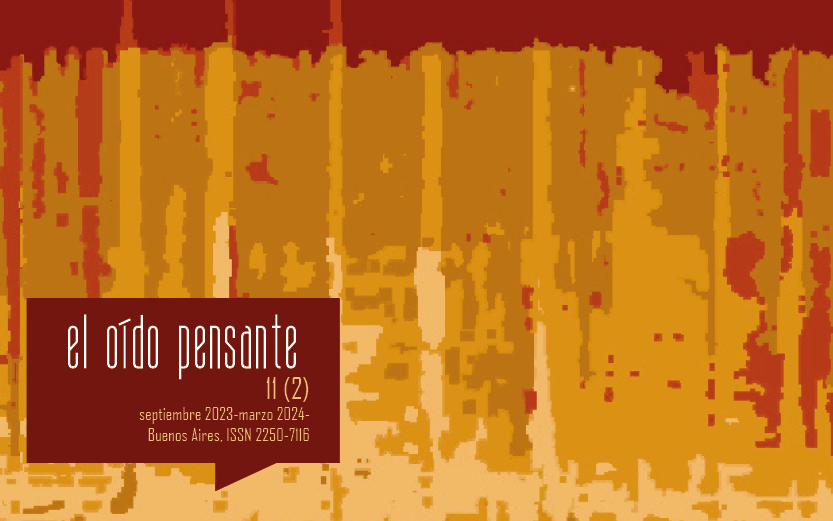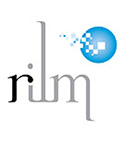Learning to Listen, Teaching to Understand: The Democratization of Music Analysis
Abstract
The information society has enabled the universalization, to some extent, of the access to classical music. The emerging technologies have helped remove most of the geographic and economic barriers that prevented the entirety of mankind to reach this kind of music, giving birth to a whole new audience. However, many of these new listeners find trouble when trying to decode the language and resources used in a significant part of the repertoire, specially the one emerged from the avant-garde movements from the 20th century. In this scenario, music analysis becomes an ideal tool to overcome these difficulties and break through the last barrier for the general audience to access classical music. But to reach this new audience, analysis itself must be democratized: it should focus on its most accessible methodologies and avoid becoming a victim of the technicalities it aims to decode. This democratization can only be achieved by observing the features of the new audience and by studying the available techniques that analysts can use to offer the new listeners the proper tools and methodologies to understand and enjoy classical music.Downloads
References
Agawu, K. (2009). Music as Discourse: Semiotic Adventures in Romantic Music. Oxford University Press.
Arango, C. y Roncallo-Dow, S. (2021). Música y filosofía (de la música): estado de la cuestión. Una revisión de problemas, discusiones y perspectivas. El oído pensante, 9(1), 153-180. http://revistascientificas2.filo.uba.ar/index.php/oidopensante/article/view/8022
Bent, I. (1987). Analysis. Macmillan Press Music.
Cook, N. (1999a). ¿Qué nos dice el análisis musical? (M. Eguiazabal, trad.). Quodlibet, 13, 54-70. https://ebuah.uah.es/dspace/handle/10017/35946
Cook, N. (1999b). El análisis desde la perspectiva psicológica de Leonard Meyer (I. García Adánez, trad.). Quodlibet, 13, 90-105. https://ebuah.uah.es/dspace/handle/10017/35960
Cook, N. (2009). A Guide to Musical Analysis. Oxford University Press.
De Benito, L. A. (Dir. y Pres.). (2010-presente). Música y significado [Programa de radio]. Radio Nacional de España: Radio Clásica.
Dobson, M. C. (2010). New Audiences for Classical Music: The Experiences of Non-attenders at Live Orchestral Concerts. Journal of New Music Research, 39(2), 111-124. Doi: https://doi.org/10.1080/09298215.2010.489643
Englander, R. (Dir.) y Bernstein, L. (Escritor y presentador). (1958-1972). New York Philharmonic Young People’s Concerts [Programa de televisión]. CBS.
Fellone, U. (2022). El género musical en la actualidad: reflexiones ante un contexto digital y globalizado. El oído pensante, 10(1), 59-85. Recuperado de http://revistascientificas2.filo.uba.ar/index.php/oidopensante/article/view/11338
Fineberg, J. (2006). Classical Music, Why Bother? Londres: Routledge.
Forte, A. y Gilbert, S. E. (1982). Introduction to Schenkerian Analysis. Nueva York: W. W. Norton & Company.
García Castilla, J. D. (2019). Conocimientos en resonancia: hacia una epistemología de la escucha. El oído pensante, 7(2), 135-154. Recuperado de http://revistascientificas2.filo.uba.ar/index.php/oidopensante/article/view/7564
Gil Fuentes, J. V. (2020). El concierto didáctico en educación secundaria a través del aprendizaje cooperativo. (tesis de doctorado). Universitat de València, Valencia, España. Recuperado de https://roderic.uv.es/handle/10550/75794
González, J. P. (2015). Performatividades líquidas y juicio de valor en las músicas del siglo XX. El oído pensante, 3(1), 29-42. Recuperado de http://revistascientificas2.filo.uba.ar/index.php/oidopensante/article/view/7453
Igoa, E. (2017). Armonía funcional: revisión y actualización del sistema. Música: Revista del Real Conservatorio Superior de Música de Madrid, 24, 187-224.
Jarman, F. (2016). Teaching Music Analysis to First-year Undergraduates with Radical Subject-specific Diversity. El oído pensante, 4(1), 218-236. Recuperado de http://revistascientificas2.filo.uba.ar/index.php/oidopensante/article/view/7535
Katz, A. T. (1972). Challenge To Musical Tradition - A New Concept Of Tonality. Katz Press.
Keller, H. (1982). Epilogue/Prologue: Criticism and Analysis. Music Analysis, 1(1), 9-31.
Lin, P-Y. (2008, Agosto). Challenges of Developing Audiences for Symphony Orchestras in Twenty-first Century. (tesis de maestría). University of Akron, Ohio, Estados Unidos. Recuperado de https://etd.ohiolink.edu/apexprod/rws_olink/r/1501/10?clear=10&p10_accession_num=akron1210950102
Llorens, A. (2021). El análisis de la interpretación y la interpretación del análisis. Quodlibet, 76, 26-30. Doi: https://doi.org/10.37536/quodlibet.2021.76.1541
McClary, S. (2002). Feminine Endings: Music, Gender, & Sexuality. Minnesota: University of Minnesota Press.
McClary, S. (2006). The World According to Taruskin. Music & Letters, 87(3), 408-415. Doi: https://doi.org/10.1093/ml/gcl001
Meyer, L. B. (2001). La emoción y el significado de la música (J. L. Turina, trad.). Madrid: Alianza Editorial. (Original publicado en 1956).
Mielonen, H. (2003). Attracting New Audiences: Attitudes and Experiences in Attending Classical Music Concert of Students in Their Twenties. (tesis de maestría). Sibelius-Akatemia, Helsinski, Finlandia. Recuperado de https://www.finna.fi/Record/uniarts_print.992815144206249?lng=en-gb
Molino, J. (1990). Musical Fact and the Semiology of Music (J. A. Underwood, trad.). Music Analysis, 9(2), 113-156.
O'Hara, W. (2021). Hans Keller and the Media of Analysis. En J. D. Jenkins (Ed.). The Oxford Handbook of Public Music Theory. New York: Oxford University Press.
Orquesta y Coro Nacionales de España. (Sin fecha). Bienvenida 2.0. Recuperado de https://ocne.mcu.es/bienvenida-2.0 (05/12/2022).
Pitts, S. E. (2005). What Makes an Audience? Investigating the Roles and Experiences of Listeners at a Chamber Music Festival. Music & Letters, 86(2), 257-269. Doi: https://doi.org/10.1093/ml/gci035
Pryer, A. (1996). Nattiez’s ‘Music and Discourse’: Situating the Philosophy. Music Analysis, 15(1), 101-116.
Rancière, J. (2009). The Emancipated Spectator (G. Elliott, trans.). Londres y Nueva York: Verso.
Rothstein, W. (2002). El análisis y la interpretación musical (J. C. Lores, trad.). Quodlibet, 24, 22-48. Recuperado de https://ebuah.uah.es/dspace/handle/10017/36529
Salzer, F. (1995). Audición estructural: coherencia tonal en la música (P. Purroy, trad.). Barcelona: Editorial Labor.
Small, C. (1998). Musicking: The Meanings of Performing and Listening. Middletown, Connecticut: Wesleyan University Press.
Steinbrecher, B. (2021). Musical Nuances and the Aesthetic Experience of Popular Music Hooks: Theoretical Considerations and Analytical Approaches. El oído pensante, 9(1), 111-151. Recuperado de http://revistascientificas2.filo.uba.ar/index.php/oidopensante/article/view/8360
Taruskin, R. (2009). The Musical Mystique: Defending Classical Music against Its Devotees. En The Danger of Music and Other Anti-Utopian Essays (pp. 330-353). California: University of California Press.
Toelle, J. y Sloboda, J. A. (2021). The Audience as Artist? The Audience’s Experience of Participatory Music. Musicae Scientiae, 25(1), 67-91. Doi: https://doi.org/10.1177/10298649198448
Tovey, D. F. (1949a). The Meaning of Music. En The Main Stream of Music and Other Essays (pp. 396-401). Oxford: Oxford University Press.
Tovey, D. F. (1949b). The Training of Musical Imagination. En The Main Stream of Music and Other Essays (pp. 375-395). Oxford: Oxford University Press.
Weber, W. (1997). Did people listen in the 18th century? Early Music, 25(4), 678-691.























